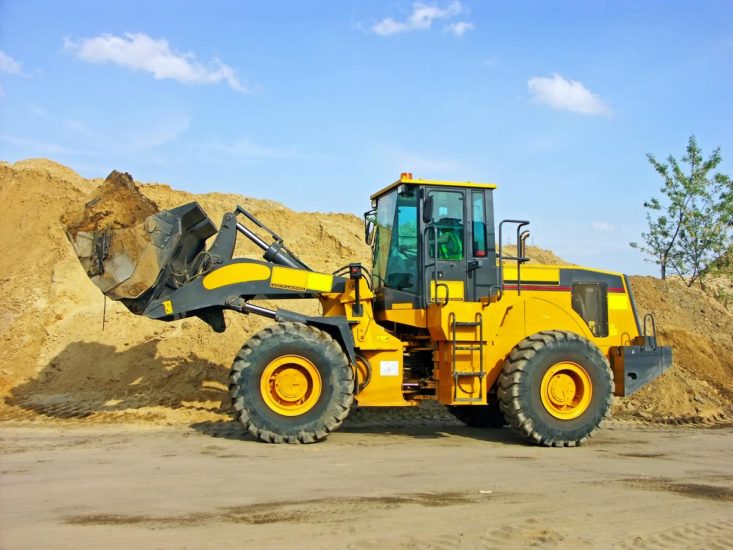Boom Lift Rental: Get To New Levels Safely
Boom Lift Rental: Get To New Levels Safely
Blog Article
Renting Out Vs. Buying Construction Devices: Making the Right Selection for Your Project
When starting a building and construction project, one of the critical choices that forecast stakeholders and managers deal with is whether to rent or acquire building and construction devices. Both choices have their downsides and advantages, making the selection a crucial one in the task preparation process. The choice depends upon different elements such as cost considerations, task duration, tools upkeep, flexibility, scalability, and threat management. Each aspect plays a vital function in determining one of the most appropriate path for the project's equipment demands. forklift rental. Let's check out these variables additionally to understand how they impact the decision-making process and eventually the success of the job.
Price Considerations
When evaluating the financial element of leasing versus acquiring building tools, the lasting expenditures and upfront costs must be thoroughly thought about. Renting out tools usually needs reduced initial repayments compared to purchasing, making it an appealing alternative for short-term jobs or professionals with spending plan constraints. Leasing gets rid of the need for large capital expenses and reduces the monetary risk related to equipment possession, such as upkeep and depreciation expenses. Nevertheless, in the lengthy run, constantly renting devices can accumulate higher expenses than buying, particularly for extended projects.
On the various other hand, acquiring construction tools includes greater in advance prices but can result in lasting cost savings, specifically for long-lasting projects or frequent users. Eventually, the decision between buying and renting out building devices pivots on the task's duration, frequency of use, spending plan factors to consider, and long-term financial goals.
Task Duration

Alternatively, for lasting jobs or continuous building work, buying devices can be the more affordable option. Buying tools can cause set you back financial savings in the long run, particularly if the tools will be regularly utilized. In addition, owning equipment gives a sense of control over its availability and allows for customization to fit certain task demands.

Tools Upkeep
Offered the vital duty job duration plays in establishing the most affordable approach between renting and purchasing building equipment, the emphasis now shifts towards examining the necessary facet of tools upkeep. Proper upkeep is crucial for making certain the optimal efficiency and long life of building devices. Leasing equipment frequently includes the benefit of having well-kept machinery provided by the rental business. This can ease the burden of upkeep tasks from the job proprietor or contractor, conserving effort and time. On the various other hand, owning tools requires an aggressive technique to upkeep to avoid malfunctions, make sure safety and security, and prolong the devices's lifespan. Routine inspections, maintenance, and prompt repair work are his explanation essential to maintain owned and operated devices in leading functioning problem. Consider maintenance expenses when determining between buying and leasing, as neglecting maintenance can bring about expensive repairs, downtime, and job hold-ups. Ultimately, a properly maintained building and construction devices fleet, whether rented or had, is important for the effective and effective conclusion of building projects.
Adaptability and Scalability
In the world of building equipment administration, the facet of versatility and scalability holds substantial importance for job efficiency and source utilization. Deciding to rent out construction equipment provides a high degree of flexibility as it permits the quick modification of tools types and quantities based on the developing demands of a task. Renting makes it possible for contractors to access a vast array of customized equipment that might be needed for details tasks without the long-lasting dedication of ownership. This versatility is specifically helpful for tasks with differing demands or unpredictable durations (boom lift rental).
Additionally, scalability, an additional essential aspect, is naturally connected to flexibility. Renting out building tools uses the advantage of conveniently scaling operations up or down as project needs change. Contractors can quickly trade or include equipment to match the task's altering needs without the constraints of having assets that might end up being underutilized or out-of-date. This capability to scale sources successfully can lead to cost savings and enhanced task timelines, making leasing a desirable option for projects calling for flexibility and receptive resource appropriation.
Danger Monitoring
Reliable danger monitoring in building devices operations is paramount to making sure task success and mitigating possible economic losses. Construction jobs naturally involve various dangers, such as devices break downs, accidents, and project hold-ups, which can significantly affect the project timeline and budget. By very carefully taking into consideration the risks connected with owning or renting out construction tools, project managers can make educated decisions to reduce these possible threats.
Renting construction equipment can supply a level of danger reduction by transferring the duty of repair and maintenance to the rental business. This can lower the economic concern on the project proprietor in situation of unforeseen tools failings (equipment rental company). In addition, renting out supplies the flexibility to accessibility specific tools for certain project phases, minimizing the threat of owning land planer for skid steer underutilized machinery
On the other hand, having building and construction equipment supplies a sense of control over its usage and upkeep. Nonetheless, this also means bearing the complete obligation for fixings, upkeep expenses, and depreciation, raising the economic threats related to tools ownership. Mindful risk evaluation and factor backhoe to consider of variables such as job period, tools utilization, and maintenance needs are important in figuring out the most suitable alternative for efficient risk monitoring in construction tasks.
Final Thought
Finally, when deciding between purchasing and renting construction equipment, it is essential to consider cost, job period, devices maintenance, versatility, threat, and scalability management. Each variable plays a crucial role in establishing one of the most appropriate choice for the task handy. By very carefully reviewing these elements, task managers can make an enlightened decision that aligns with their spending plan, timeline, and total job objectives.

Report this page